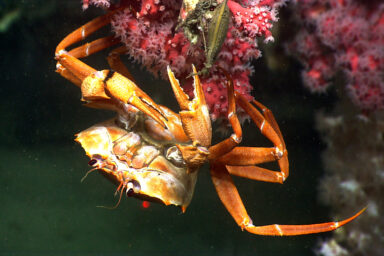PICKS are stories from many sources, selected by our editors or recommended by our readers because they are important, surprising, troubling, enlightening, inspiring, or amusing. They appear on our site and in our daily newsletter. Please send suggested articles, videos, podcasts, etc. to picks@whowhatwhy.org.
IRS to End Use of Facial Recognition to Identify Taxpayers (Maria)
The author writes, “The IRS said Monday it will suspend the use of facial recognition technology to authenticate people who create online accounts after the practice was criticized by privacy advocates and lawmakers. The agency said it would no longer use a third-party service, called ID.me, for facial recognition. Critics of the software said the database could become a target for cyberthreats. They also expressed concern about how the information could be used by other government agencies, among other concerns.”
This Is Gerrymandering at Its Worst. It Doesn’t Have to Be This Way. (Dan)
The author writes, “Lawmakers across the country are redrawing state legislative and congressional districts in a high-stakes process known as redistricting, which happens every 10 years. The emerging consensus is that their new maps are not terrible because, nationally, neither party looks likely to gain a large number of congressional seats as a result of the altered lines. But that is a poor way to judge redistricting. The old maps were already highly skewed to maximize partisan advantage, so keeping things about where they were is no reason to cheer. Line-drawers in many states are also aggressively limiting the number of districts where minorities have a shot at winning, heading in precisely the wrong direction as the country’s non-White population grows.”
The Coronavirus Will Surprise Us Again (Sean)
From The Atlantic: “To understand how the coronavirus keeps evolving into surprising new variants with new mutations, it helps to have some context: The virus’s genome is 30,000 letters long, which means that the number of possible mutation combinations is mind-bogglingly huge. As Jesse Bloom, a virologist at the Fred Hutchinson Cancer Research Center, told me, that number far, far exceeds the number of atoms in the known universe. Scientists try to conceptualize these possibilities in a ‘fitness landscape’ — a hyper-dimensional space of peaks and valleys. The higher peaks the coronavirus discovers, the ‘fitter,’ or better at infecting people, it becomes. The more the virus replicates, the more mutations it tries out, the more ground it explores, and the more peaks it may find. To predict what the coronavirus could do next, we would simply need to know the topography of the entire fitness landscape—which, maybe you’ve guessed, we do not. Not at all. Not even close.”
Millions in Tax Dollars Flow to Anti-Abortion Centers in US (Reader Steve)
The author writes, “Anti-abortion centers across the country are receiving tens of millions of tax dollars to talk women out of ending their pregnancies, a nearly fivefold increase from a decade ago that resulted from an often-overlooked effort by mostly Republican-led states. The nonprofits known as crisis pregnancy centers are typically religiously affiliated and counsel clients against having an abortion as part of their free but limited services. That practice and the fact that they generally are not licensed as medical facilities have raised questions about whether it’s appropriate to funnel so much tax money their way.”
Paralyzed Man With Severed Spine Walks Thanks to Implant (Aline)
The author writes, “A paralyzed man with a severed spinal cord has been able to walk again, thanks to an implant developed by a team of Swiss researchers. It is the first time someone who has had a complete cut to their spinal cord has been able to walk freely. The same technology has improved the health of another paralyzed patient to the extent that he has been able to become a father. The research has been published in the journal Nature Medicine.”
The Kept and the Killed (Dana)
From The Public Domain Review: “Of the 270,000 photographs commissioned by the US Farm Security Administration to document the Great Depression, more than a third were ‘killed.’ Erica X Eisen examines the history behind this hole-punched archive and the unknowable void at its center.”
Swedish Firm Deploys Crows to Pick Up Cigarette Butts (Laura)
The author writes, “Crows are being recruited to pick up discarded cigarette butts from the streets and squares of a Swedish city as part of a cost-cutting drive. The wild birds carry out the task as they receive a little food for every butt that they deposit in a bespoke machine designed by a startup in Södertälje, near Stockholm.”



